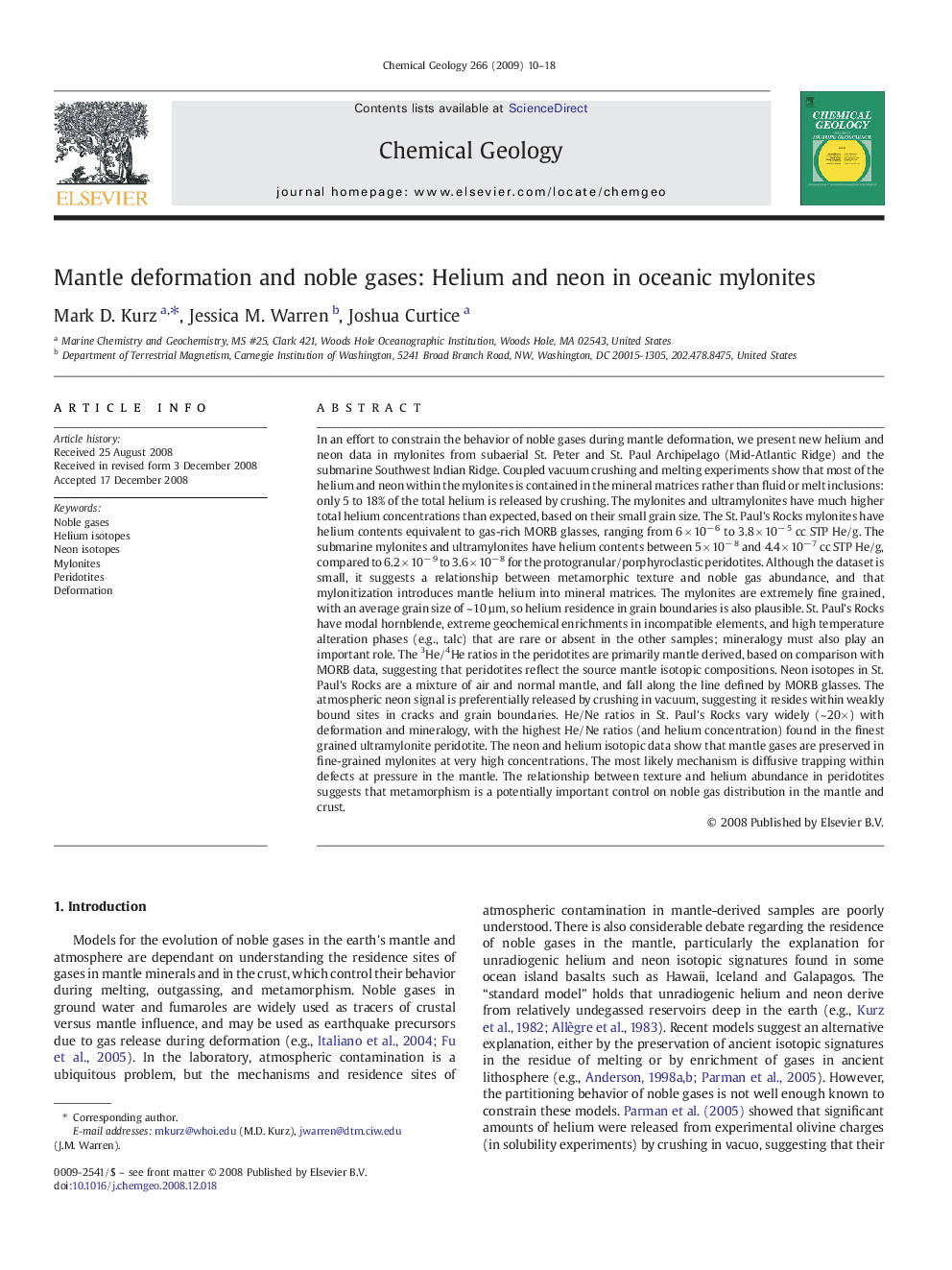| Article ID | Journal | Published Year | Pages | File Type |
|---|---|---|---|---|
| 4700280 | Chemical Geology | 2009 | 9 Pages |
Abstract
In an effort to constrain the behavior of noble gases during mantle deformation, we present new helium and neon data in mylonites from subaerial St. Peter and St. Paul Archipelago (Mid-Atlantic Ridge) and the submarine Southwest Indian Ridge. Coupled vacuum crushing and melting experiments show that most of the helium and neon within the mylonites is contained in the mineral matrices rather than fluid or melt inclusions: only 5 to 18% of the total helium is released by crushing. The mylonites and ultramylonites have much higher total helium concentrations than expected, based on their small grain size. The St. Paul's Rocks mylonites have helium contents equivalent to gas-rich MORB glasses, ranging from 6 Ã 10â 6 to 3.8 Ã 10â 5 cc STP He/g. The submarine mylonites and ultramylonites have helium contents between 5 Ã 10â 8 and 4.4 Ã 10â7 cc STP He/g, compared to 6.2 Ã 10â 9 to 3.6 Ã 10â 8 for the protogranular/porphyroclastic peridotites. Although the dataset is small, it suggests a relationship between metamorphic texture and noble gas abundance, and that mylonitization introduces mantle helium into mineral matrices. The mylonites are extremely fine grained, with an average grain size of ~ 10 µm, so helium residence in grain boundaries is also plausible. St. Paul's Rocks have modal hornblende, extreme geochemical enrichments in incompatible elements, and high temperature alteration phases (e.g., talc) that are rare or absent in the other samples; mineralogy must also play an important role. The 3He/4He ratios in the peridotites are primarily mantle derived, based on comparison with MORB data, suggesting that peridotites reflect the source mantle isotopic compositions. Neon isotopes in St. Paul's Rocks are a mixture of air and normal mantle, and fall along the line defined by MORB glasses. The atmospheric neon signal is preferentially released by crushing in vacuum, suggesting it resides within weakly bound sites in cracks and grain boundaries. He/Ne ratios in St. Paul's Rocks vary widely (~ 20Ã) with deformation and mineralogy, with the highest He/Ne ratios (and helium concentration) found in the finest grained ultramylonite peridotite. The neon and helium isotopic data show that mantle gases are preserved in fine-grained mylonites at very high concentrations. The most likely mechanism is diffusive trapping within defects at pressure in the mantle. The relationship between texture and helium abundance in peridotites suggests that metamorphism is a potentially important control on noble gas distribution in the mantle and crust.
Related Topics
Physical Sciences and Engineering
Earth and Planetary Sciences
Geochemistry and Petrology
Authors
Mark D. Kurz, Jessica M. Warren, Joshua Curtice,
